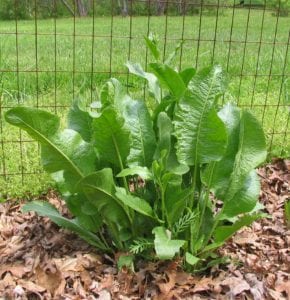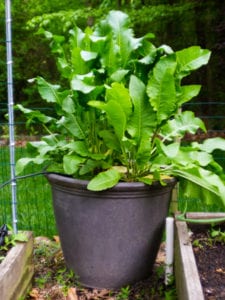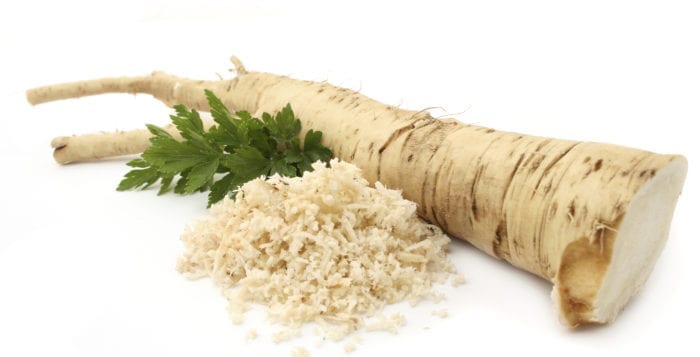Long Island Gardening: Growing horseradish in your garden
By Ellen Barcel

It’s time to plan and plant your herb garden, a garden filled with plants used to provide flavoring for a wide variety of dishes. I particularly like horseradish (Armoracia rusticana) so am planning to grow a bit this year.
How does one use horseradish? My father loved roast beef with horseradish spread on it, whether it be on hot roast beef just out of the oven or on a cold sandwich. I once had a great chicken dish served in a resort where the chicken was baked covered with a thin layer of horseradish.
Several companies also make a cheddar flavored with horseradish. I used to be able to find a hummus with horseradish. Now, if I want it, I need to mix my own horseradish with the hummus. I’ve seen a great recipe for a cream sauce flavored with horseradish. So, basically, horseradish can be used as a flavoring for almost any savory dish if you like its strong taste.
According to the Horseradish Information Council, it has been used as far back as 1500 B.C. by the Egyptians. Since horseradish is hot, one or maybe two plants at the most are usually enough for a family, unless you and your friends and relatives really love the taste. You can buy crowns from a nursery or even use a root from the supermarket.

Horseradish can be grown in the ground or in pots. Personally, I prefer to raise my herbs in pots or in window boxes. Plants in pots are less likely to be strangled by nearby plants and less likely to spread into other plants, taking over my garden (as horseradish and plants like mints can do). Also, I control the soil — I usually use a good-quality potting soil.
Plant your horseradish at the end of April or beginning of May, depending on weather and then harvest the following late fall (after a hard frost for the hottest flavor), winter or early spring, making sure you keep a few pieces of root in the soil for the following year’s harvest since horseradish is a perennial plant. It does well in U.S.D.A. zones 4 to 7 (Long Island is zone 7) and requires little care. If you decide you don’t want to grow horseradish next year, make sure you remove all the sections of roots or it will regrow.
Horseradish grows in a wide variety of conditions but does require a rich soil, so add a generous amount of compost to the soil. Like most herbs, it grows best in sun but will tolerate light shade. Long Island’s soil is very acidic (test yours), but horseradish prefers a soil near neutral (a pH of 7). This means you need to use a good-quality potting soil if growing it in a container or add lime to your garden soil if growing in the ground. Water the plants once a week as long as there is some rain, more in drought conditions, but make sure that you don’t overwater them. They like moist but not soggy soil. If you decide to add fertilizer, do it only once in spring — personally I prefer to add more compost.
Store the harvested roots in the fridge. When ready to use, peel and then grate the harvested roots, add a dash of salt and cover with vinegar and store in your fridge for future use. I’ve read that a bit of sugar added to the mixture will cut the hot flavor. Remember that a little horseradish goes a long way. For more recipes and uses visit the Horseradish Information Council website at www.horseradish.org.
Ellen Barcel is a freelance writer and master gardener. To reach Cornell Cooperative Extension and its Master Gardener program, call 631-727-7850.







